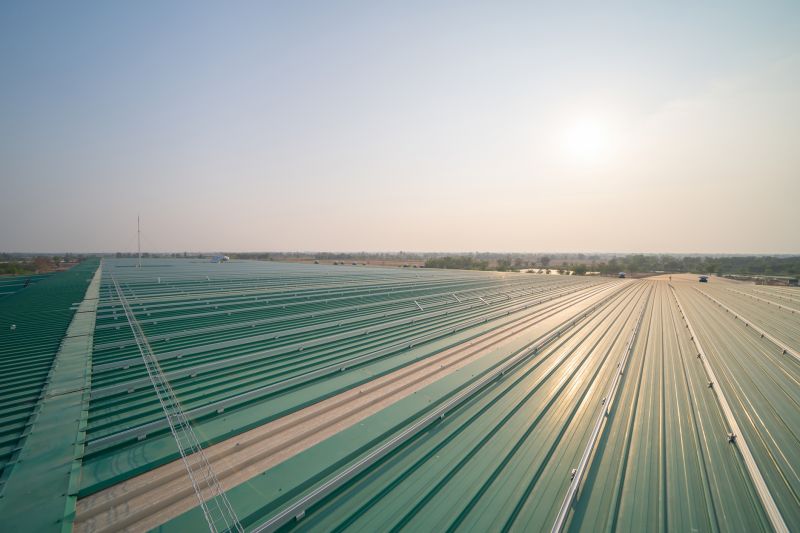Favorite Roofing Service Tools for Better Job Performance
Identify the essential equipment that boosts productivity and ensures quality workmanship in roofing projects.
 In the realm of roofing services, having the right products is essential for ensuring durable, safe, and efficient repairs or installations. From foundational tools to specialized materials, a comprehensive selection of roofing products can support professionals and DIY enthusiasts alike in achieving quality results. The variety of available products caters to different roofing types, including asphalt shingles, metal roofing, flat roofs, and more, each requiring specific tools and materials for optimal performance.
In the realm of roofing services, having the right products is essential for ensuring durable, safe, and efficient repairs or installations. From foundational tools to specialized materials, a comprehensive selection of roofing products can support professionals and DIY enthusiasts alike in achieving quality results. The variety of available products caters to different roofing types, including asphalt shingles, metal roofing, flat roofs, and more, each requiring specific tools and materials for optimal performance.
Top Overall Option
Multi-Use Roofing Tool Kit
A comprehensive roofing tool kit that includes essential items such as hammers, measuring tapes, utility knives, and safety gear. Designed to support a variety of roofing tasks, this all-in-one set offers versatility and convenience for professionals and DIY enthusiasts alike.
Types of Products For Roofing Service
Roofing Shingles
Various types of shingles including asphalt, wood, and metal options suitable for different roofing styles and climates.
Roofing Membranes
Waterproof and weather-resistant membranes designed for flat and low-slope roofs.
Roofing Nails and Fasteners
Specialized nails and fasteners engineered for secure attachment of roofing materials.
Sealants and Adhesives
High-quality sealants and adhesives to ensure watertight seals and proper adhesion of roofing components.
Roofing Underlayment
Protective layers installed beneath shingles or other roofing materials to provide additional waterproofing.
Roofing Tools
Power and manual tools such as nail guns, roofing knives, and shingle cutters for efficient installation.
Safety Equipment
Harnesses, fall protection systems, helmets, and non-slip footwear to ensure safety during roofing work.
Flashing and Ventilation
Components that improve roof durability by preventing water intrusion and promoting airflow.
Roof Coatings
Protective coatings that extend the lifespan of roofing materials and improve weather resistance.
Gutters and Downspouts
Systems designed to channel water away from the roof and foundation, preventing water damage.
Roof Inspection Tools
Infrared cameras, moisture meters, and other devices to assess roof condition and identify issues.
Ladders and Scaffolding
Access equipment that provides safe and stable platforms for roofing work at various heights.
Roof Anchors and Lanyards
Anchoring systems that secure safety harnesses and prevent falls.
Cleaning and Maintenance Supplies
Tools and products for roof cleaning, moss removal, and ongoing maintenance.
Weatherproofing Materials
Items such as waterproof tapes and membranes that enhance roof resilience against weather conditions.
Popular Choices
A powered nail gun designed for quick and consistent fastening of shingles and other roofing materials.
A durable hammer optimized for shingle installation and removal tasks.
Long, sturdy measuring tapes for accurate measurements during installation or repairs.
Harnesses that provide fall protection and are essential for working at heights.
Sharp, reliable knives used for cutting roofing materials with precision.
Extendable ladders designed specifically for safe access to roofing surfaces.
Tools designed to apply sealants evenly and efficiently across roofing joints.
Drones equipped with cameras to inspect hard-to-reach areas of roofs.
Protective helmets to safeguard against falling debris and head injuries.
Devices that improve attic ventilation and help prolong roof lifespan.
Spray equipment for applying protective roof coatings efficiently.
Power blowers to remove debris, leaves, and moss from roofing surfaces.
Flexible flashing materials used around chimneys, vents, and edges.
Devices to detect moisture levels within roofing materials for early issue detection.
Modular scaffolding that provides safe working platforms at roof height.
Protective clothing to keep workers clean and safe during roofing projects.
Quality roofing products are designed to withstand the elements and provide long-lasting protection for structures. This includes durable roofing membranes, high-quality sealants, and reliable fasteners. Proper selection of these items can influence the overall success of a roofing project, impacting both the longevity of the roof and the safety of those working on it. Understanding the features and applications of various roofing products helps ensure that each project is completed efficiently and effectively.
Safety is a critical concern when working on roofs, which makes the selection of appropriate safety gear and accessories equally important. Items such as harnesses, fall protection systems, and non-slip footwear are integral to maintaining a secure work environment. Additionally, tools that facilitate precise installation, such as measuring devices and cutting tools, contribute to the quality and safety of roofing work.
Whether undertaking a small repair or a full roof replacement, having access to a wide range of roofing products allows for flexibility and adaptability throughout the project. Proper planning and product selection can help mitigate issues during installation and promote a durable, high-quality finish that protects the property for years to come.
Key Buying Considerations
- Compatibility with your specific roofing type and materials.
- Durability and weather resistance of materials and tools.
- Ease of use and ergonomic design for efficiency and safety.
- Safety features such as fall protection and non-slip surfaces.
- Weight and portability for ease of handling and transport.
- Availability of replacement parts and accessories.
- Brand reputation and product reviews from other users.
- Warranty and customer support offered by the manufacturer.
- Cost-effectiveness considering the scope of your project.
- Compatibility with existing tools and equipment in your toolkit.
- Compliance with local safety standards and regulations.
- Versatility for various roofing tasks and future projects.
- Ease of maintenance and cleaning of tools and materials.
- Availability of training or instructional resources.
- Environmental considerations, if applicable, regarding materials.
